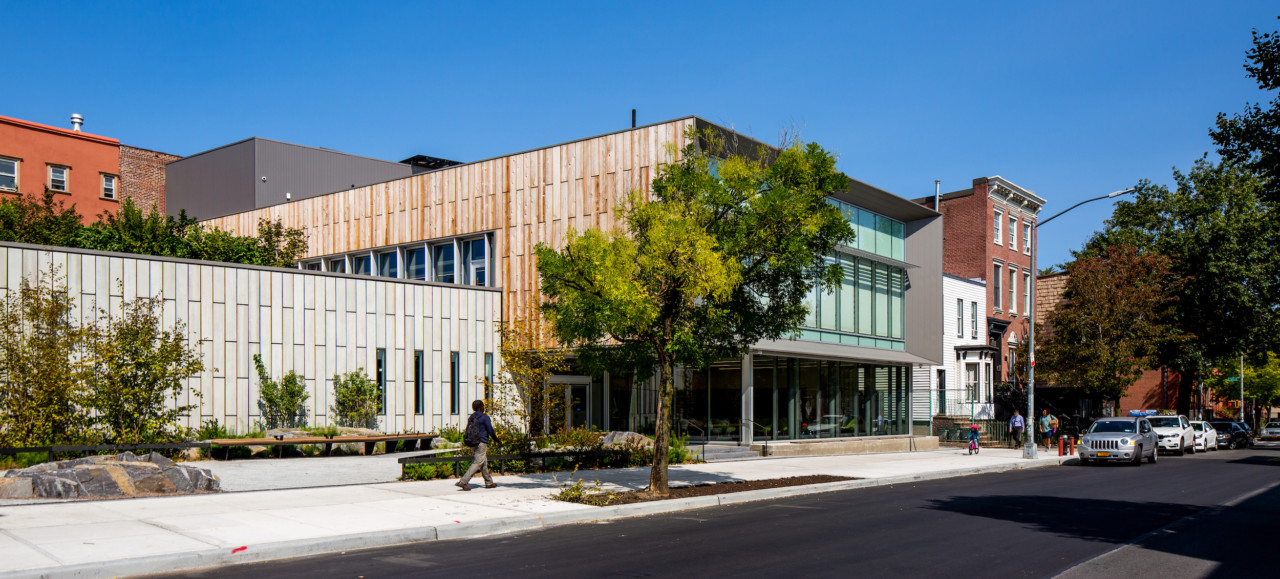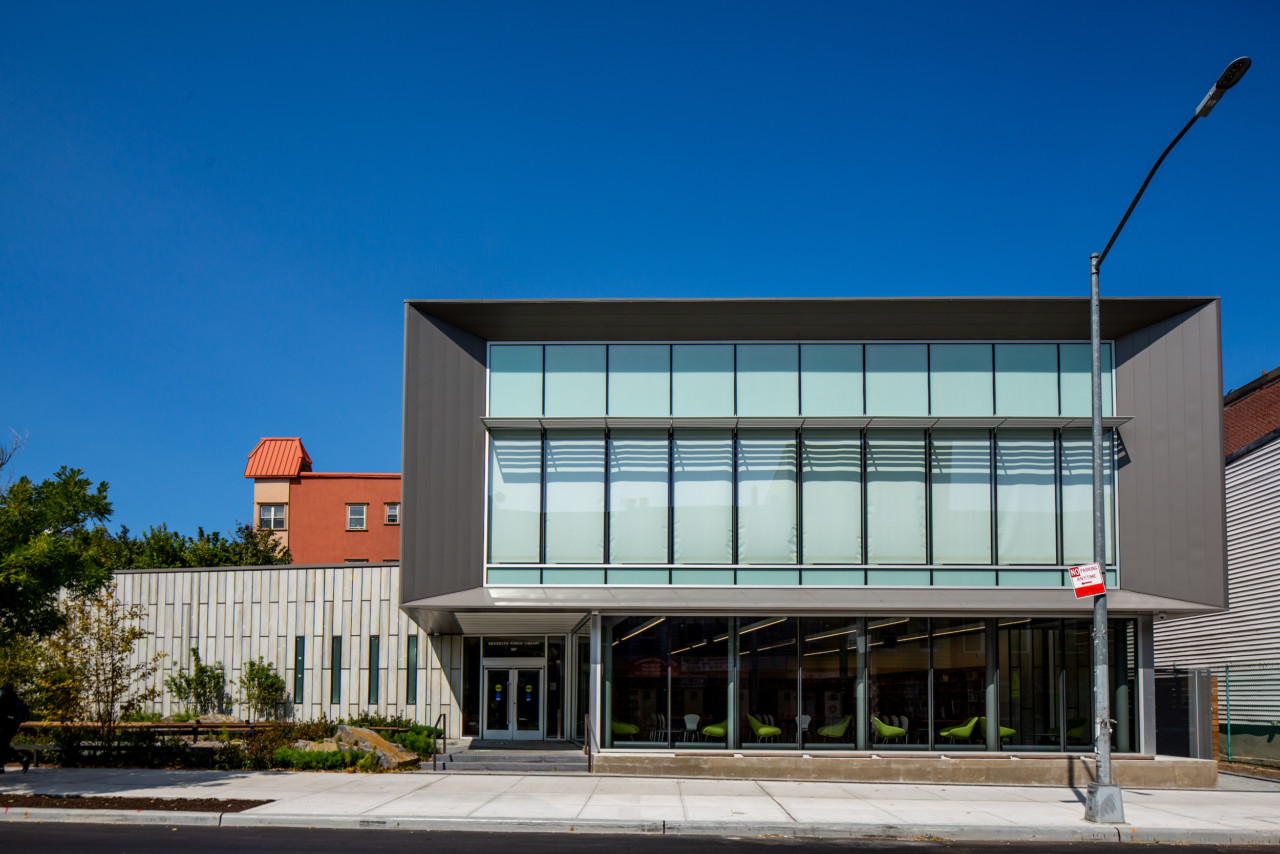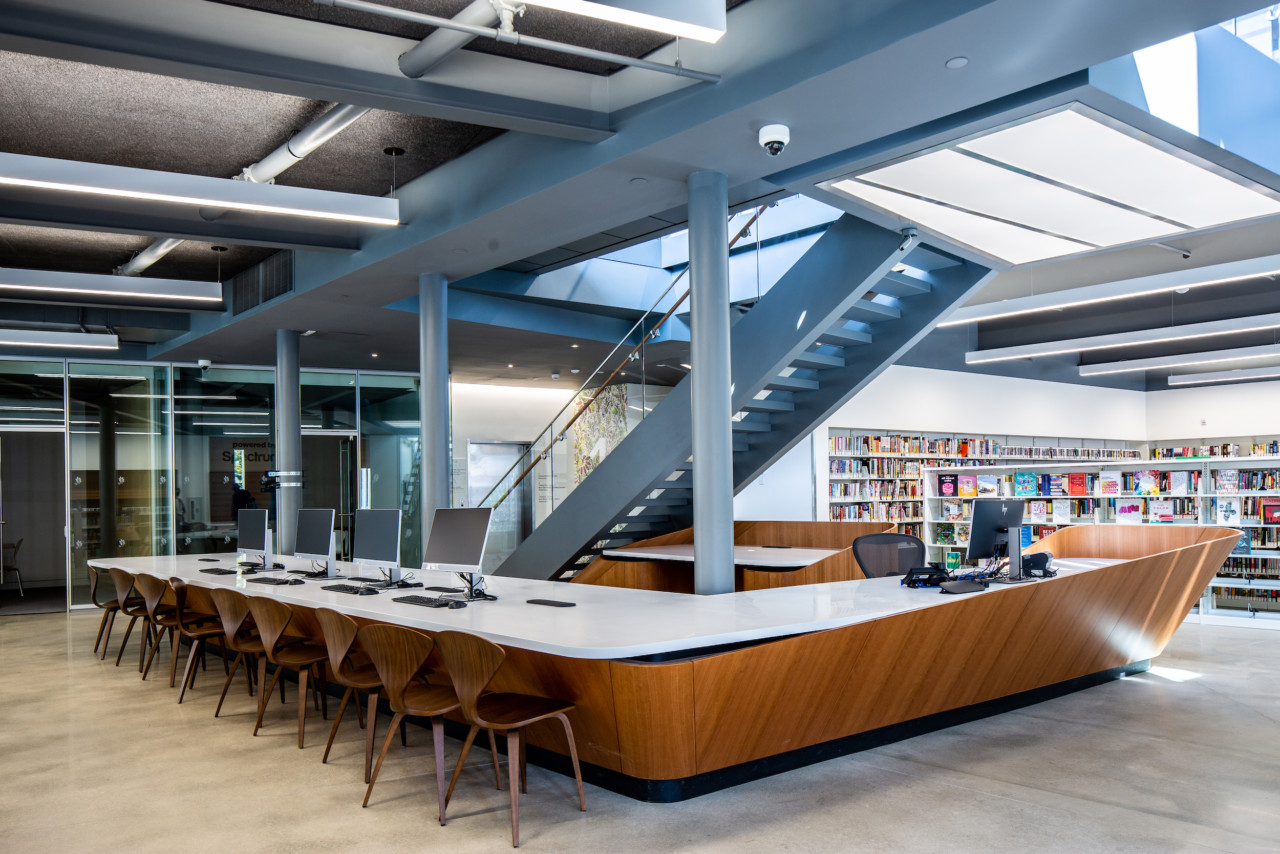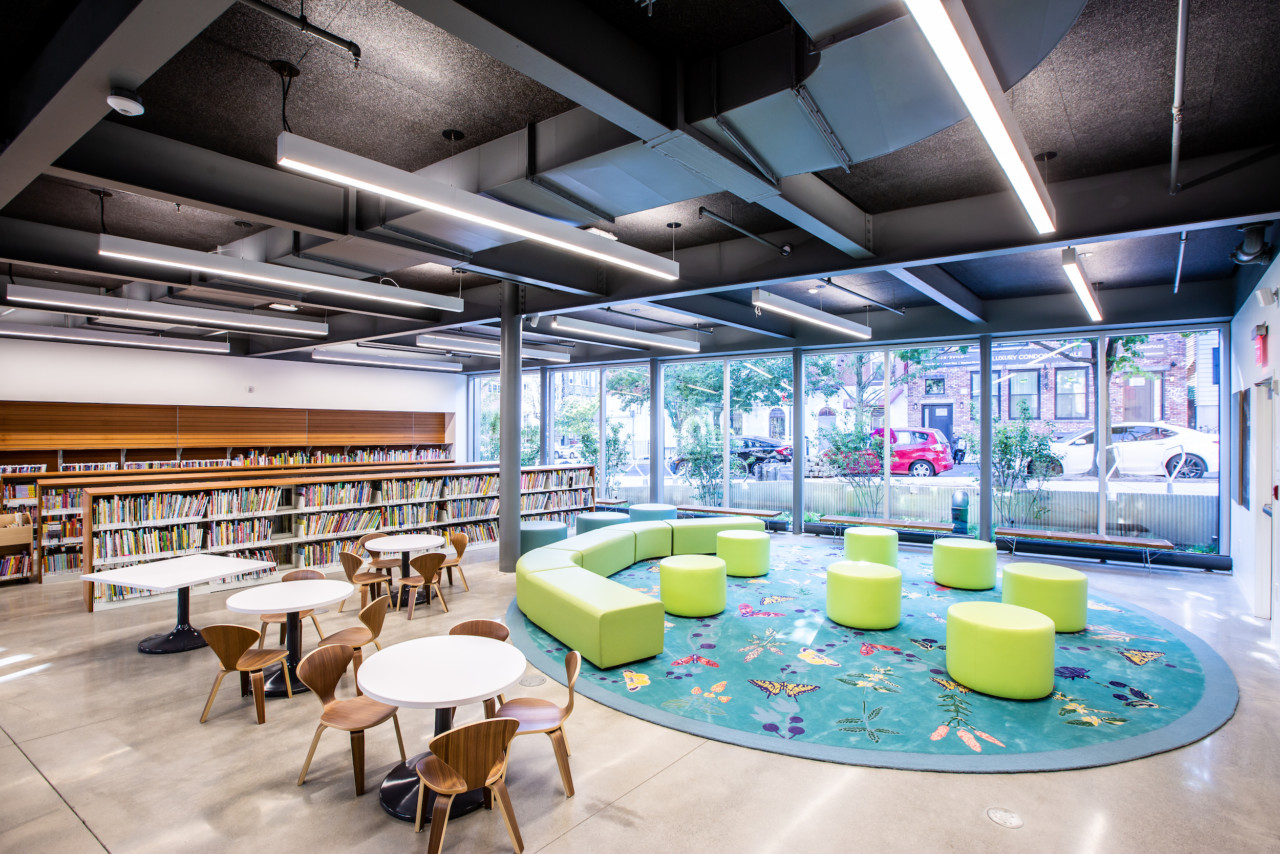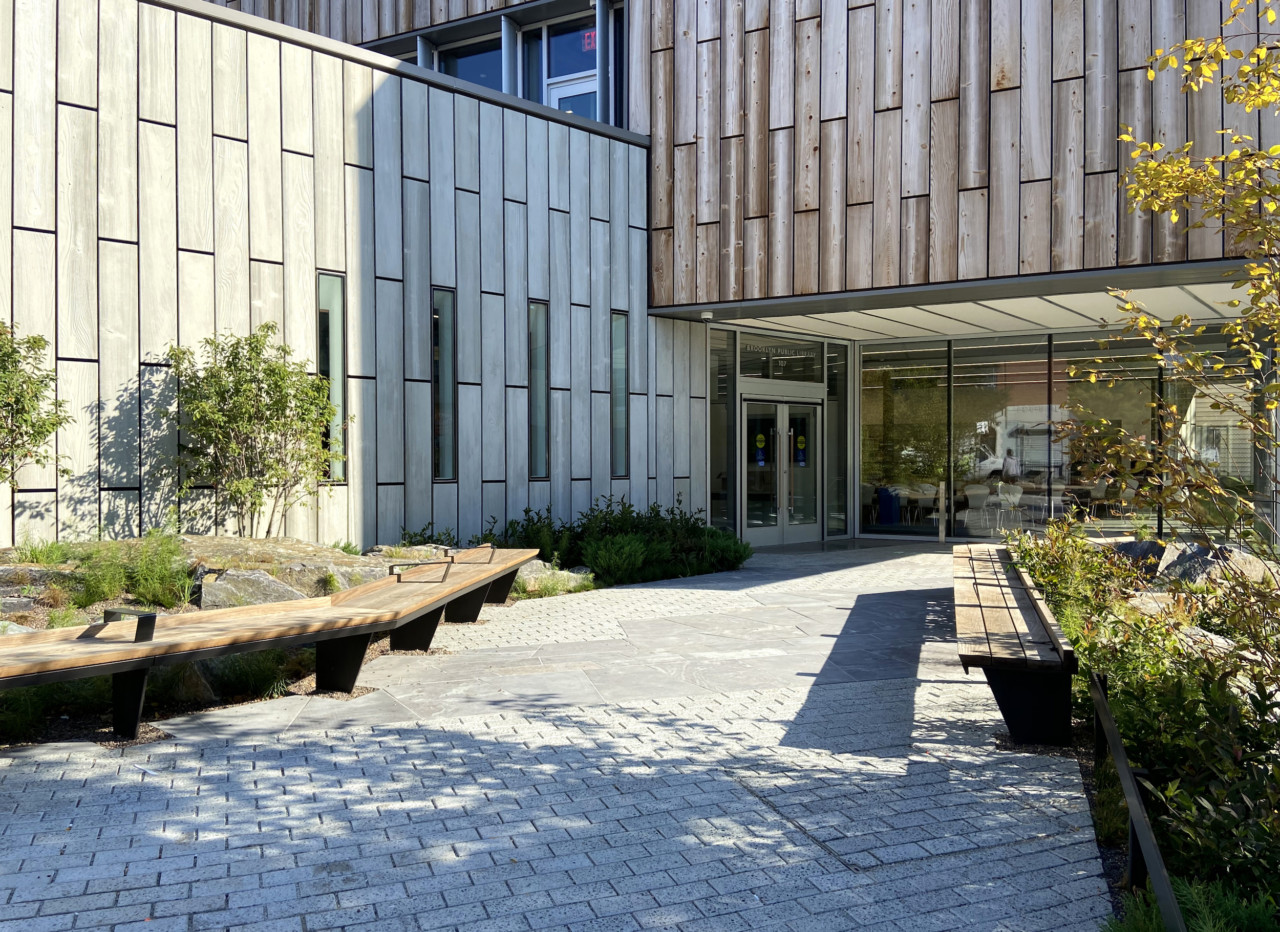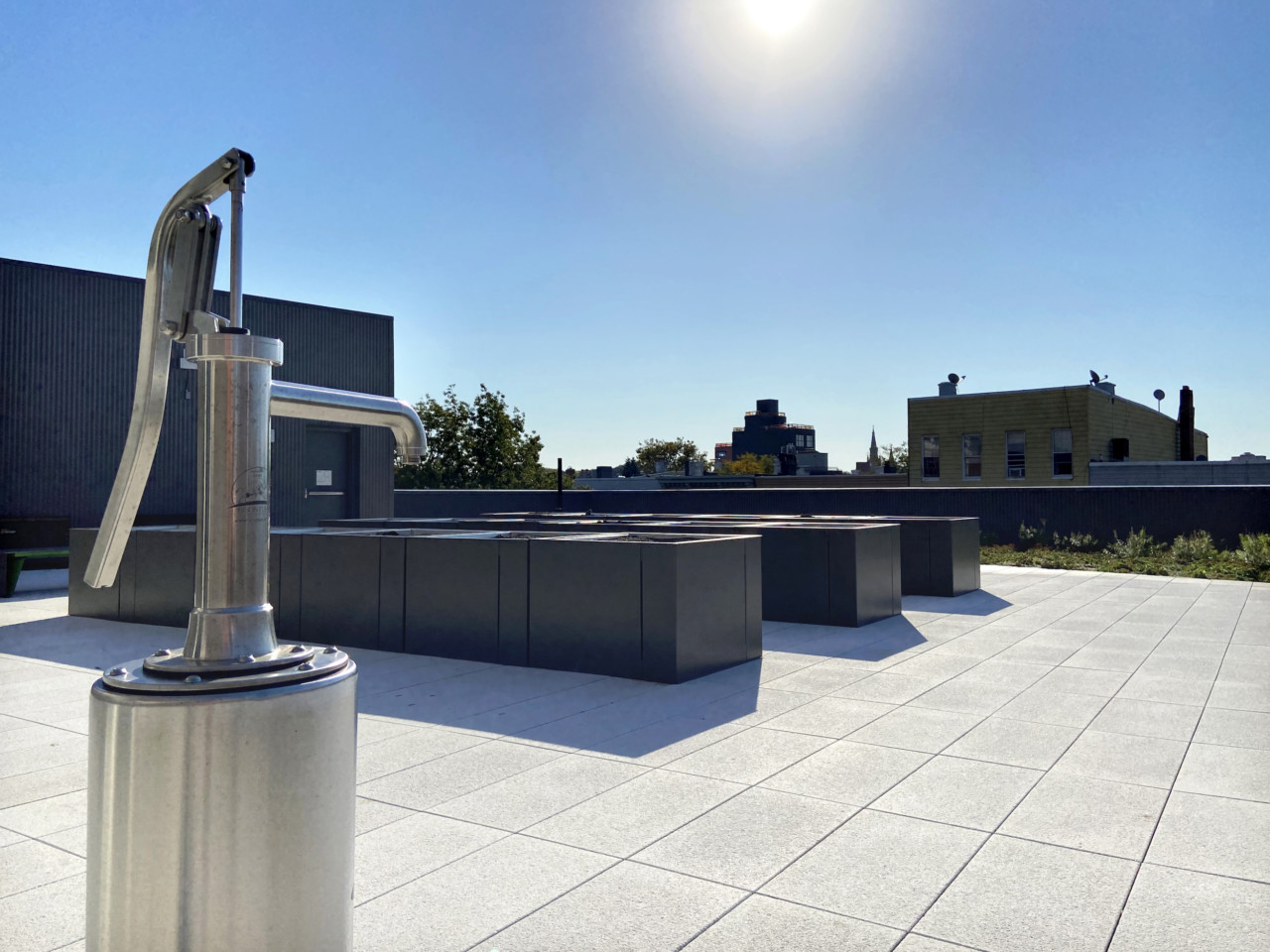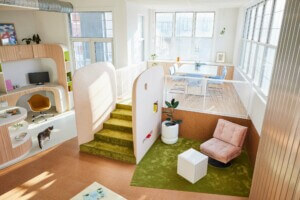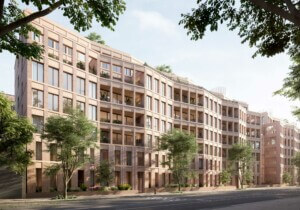A new public library and environmental learning hub, made possible in part with funds secured by the State of New York from ExxonMobil following a settlement with the oil and gas giant over a massive, decades-long underground oil leak, is now open to the public in Greenpoint, Brooklyn.
Operated by Brooklyn Public Library (BPL), the multifaceted 15,000-square-foot, three-story facility was designed by Brooklyn-based Marble Fairbanks Architects and is intensely sustainable, from its solar canopy-topped roof deck to reading rooms its rainwater-filtering front plaza. The LEED Platinum-targeting library’s multiple landscapes, which include a garden-flanked outdoor reading room and rooftop demonstration garden, were designed by SCAPE.
In the works for several years, the Greenpoint Library and Environmental Education Center replaces a squat and significantly smaller library that served the community at the same Norman Avenue site. That outmoded library, built in the early 1970s to replace a deteriorating 1906 Carnegie library, was demolished in July 2017 to make way for its replacement. Excavation work on the Greenpoint Library version 3.0 kicked off just a couple of months later. While in the homestretch for a planned spring 2020 opening, work on the already-behind library was paused and its debut delayed due to the coronavirus pandemic. Work picked up again this past summer and the completion marks the first major completed project in a larger BPL effort to revitalize—and in some cases completely rebuild—a third of its 58 neighborhood branches.
A total of $5 million was provided for the project by the Office of the New York State Attorney General and New York State Department of Environmental Conservation through the Greenpoint Community Environmental Fund (GCEF), with $18 million in additional funding coming from various other sources including the City of New York, the New York City Council, Borough President Adams, Assemblymember Joe Lentol, and the New York State Department of Education.
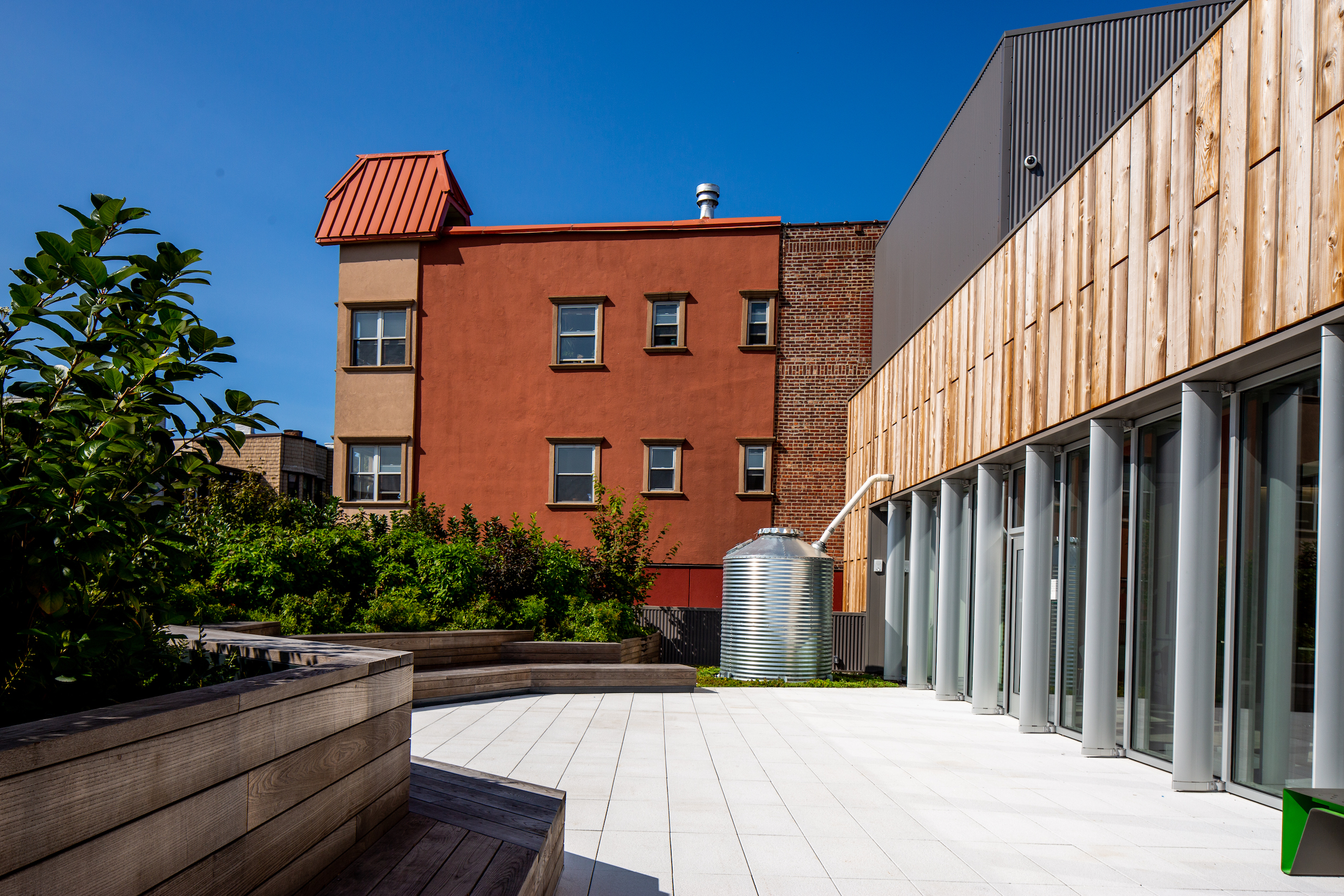
“The Greenpoint Community Environmental Fund aims to help reverse a legacy of environmental abuse and neglect in the Greenpoint community,” said New York State Attorney General Letitia James, in a press statement provided by BPL. “The new Greenpoint Library and Environmental Education Center, which received major support from the Fund, is an essential institution that will provide environmental understanding, appreciation, and engagement in the community for generations to come.”
The “legacy of environmental abuse and neglect” mentioned by James refers to one of the largest recorded oil spills (an estimated 17 to 30 million gallons) in American history, one that went unnoticed until 1978 after years of unchecked cumulative leakage beneath the streets and sidewalks of Greenpoint. Although the first recovery pumps were installed in 1979, large-scale remediation efforts didn’t commence in earnest until the early 1990s following another large oil spill into Newtown Creek. By then, the soil and groundwater in an area spanning over 55 acres—100 acres by 2007 EPA estimates—across a swath of northernmost Brooklyn had been contaminated by local refinery operations.
Functioning as a grant program for community environmental projects, the GCEF has to date awarded $17 million to 47 different projects to date since it was established in 2011 following the settlement with ExxonMobil.
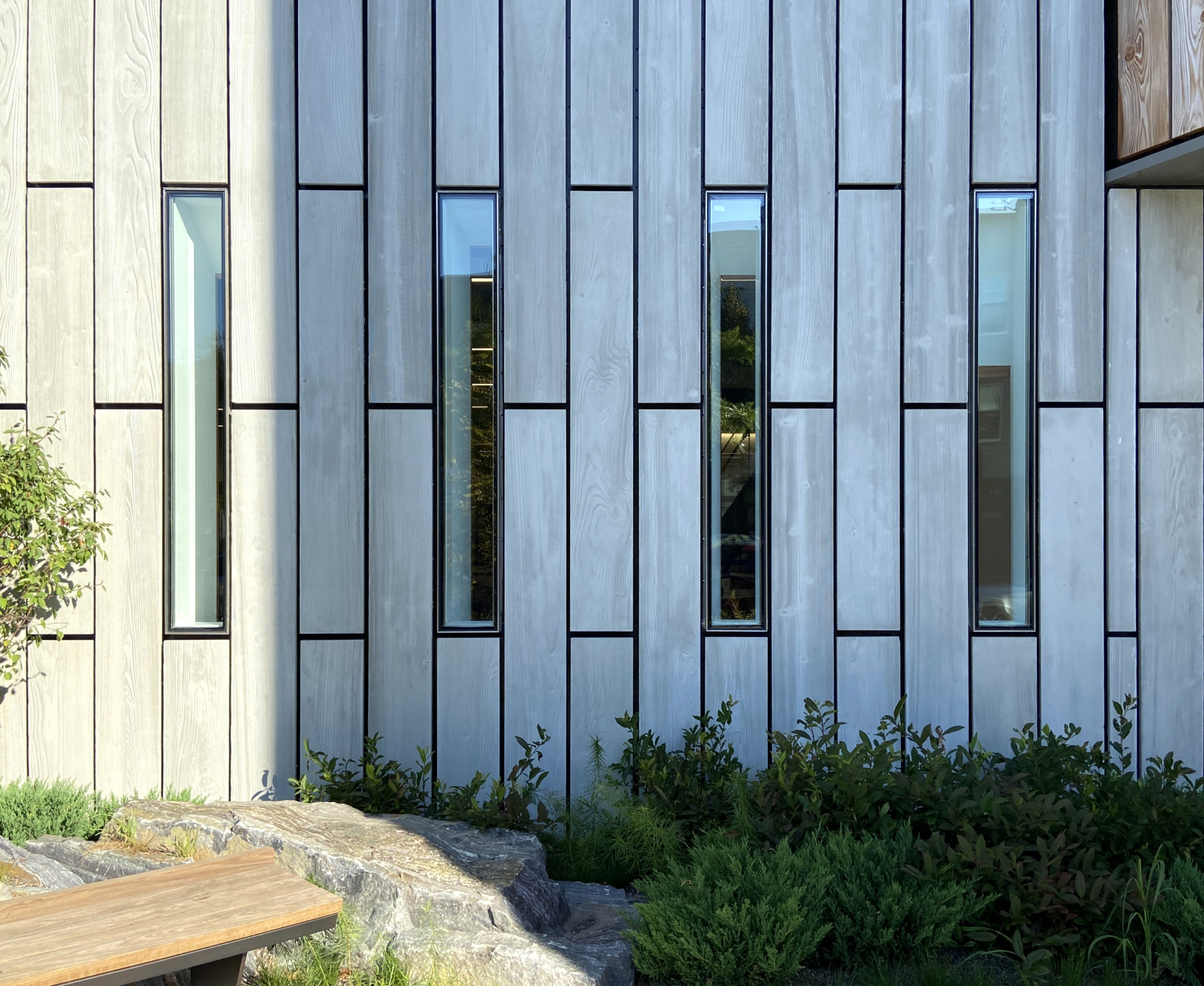
If the design of the just-opened Greenpoint Library and Environmental Education Center is any indication, the new legacy of the neighborhood, a historically manufacturing-heavy enclave that serves as the center of Polish-American cultural life in New York City, is one of ecological awareness and stewardship.
As a library pulling double duty as a place to learn about the natural world and our impact on it, it makes sense then that many of the building’s environmental footprint-lessening elements serve as community educational tools. This includes a quartet of ground-floor windows that function as sundials and an interactive energy-use tracker that enables patrons to view the library’s energy consumption (and production) in real-time. Some meeting rooms even feature sustainability sourced wood walls that pay homage to the native trees of this once heavily-forested area of northern Brooklyn along Newtown Creek. (Hence the name Greenpoint.)
Outside, a bioswale on the library’s front plaza will divert and store polluted rainwater runoff while helping to “teach about physical preparedness for climate change,” per BPL. On the second floor, the library’s “reading garden” is encased by a native plant and shrub-filled planting bed that gives users a chance to observe the range birds and insects that depend on the garden for sustenance and habitat. Also on the second floor is a cistern that collects rainwater for use in lab experiments (there are dedicated lab spaces for “interactive projects”) and for landscape/garden irrigation.
Up on the roof is a demo garden that, as detailed by BPL “can be used by students and community groups in the area, who will choose, alongside library staff, what and when to plant, and will help take care of the plants throughout the year, watching the plant life cycle in real-time.”
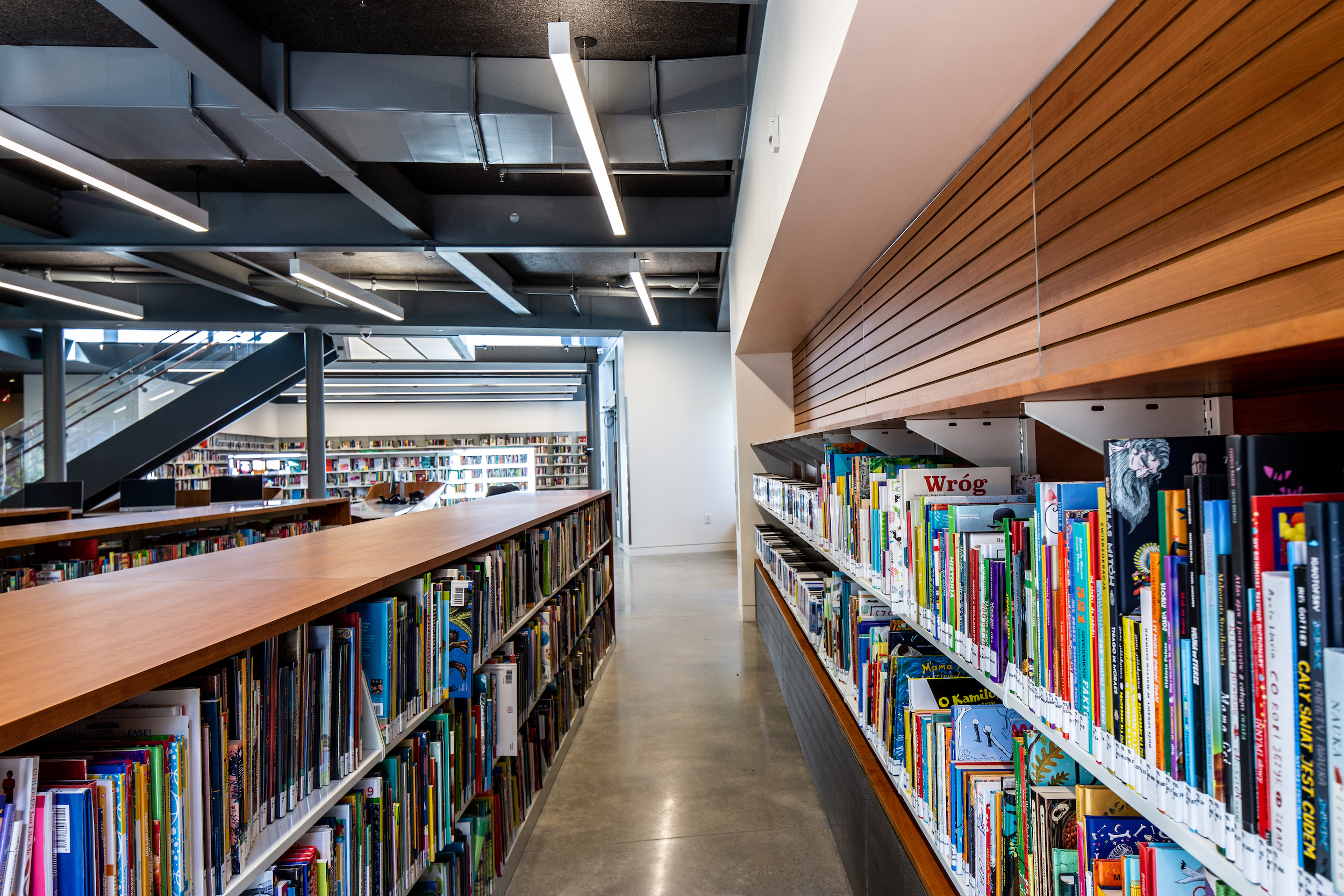
“We’ve found there’s no substitute for learning directly from the landscape,” said Gena Wirth, design principal at SCAPE, in a statement. “On all stories, the Library carves out space for hands-on encounters with the geological, ecological, and cultural history of Greenpoint. The plaza and gardens are designed to be accessible for all Library patrons in years to come—from child-sized spaces for planting and play to richly-detailed civic spaces for shared use, programs, and continued education.”
Other sustainable elements of the building include a high-efficiency heating and cooling system that relies on displacement ventilation to keep patrons comfortable, a rooftop solar array outfitted with bifacial PV modules that can produce up to 19,000 kilowatts of clean energy annually, and more. The library will also showcase the Greenpoint Environmental History Project, a BPL-led exhibition “dedicated to documenting and preserving the environmental history of Greenpoint through oral histories and community scanning.”
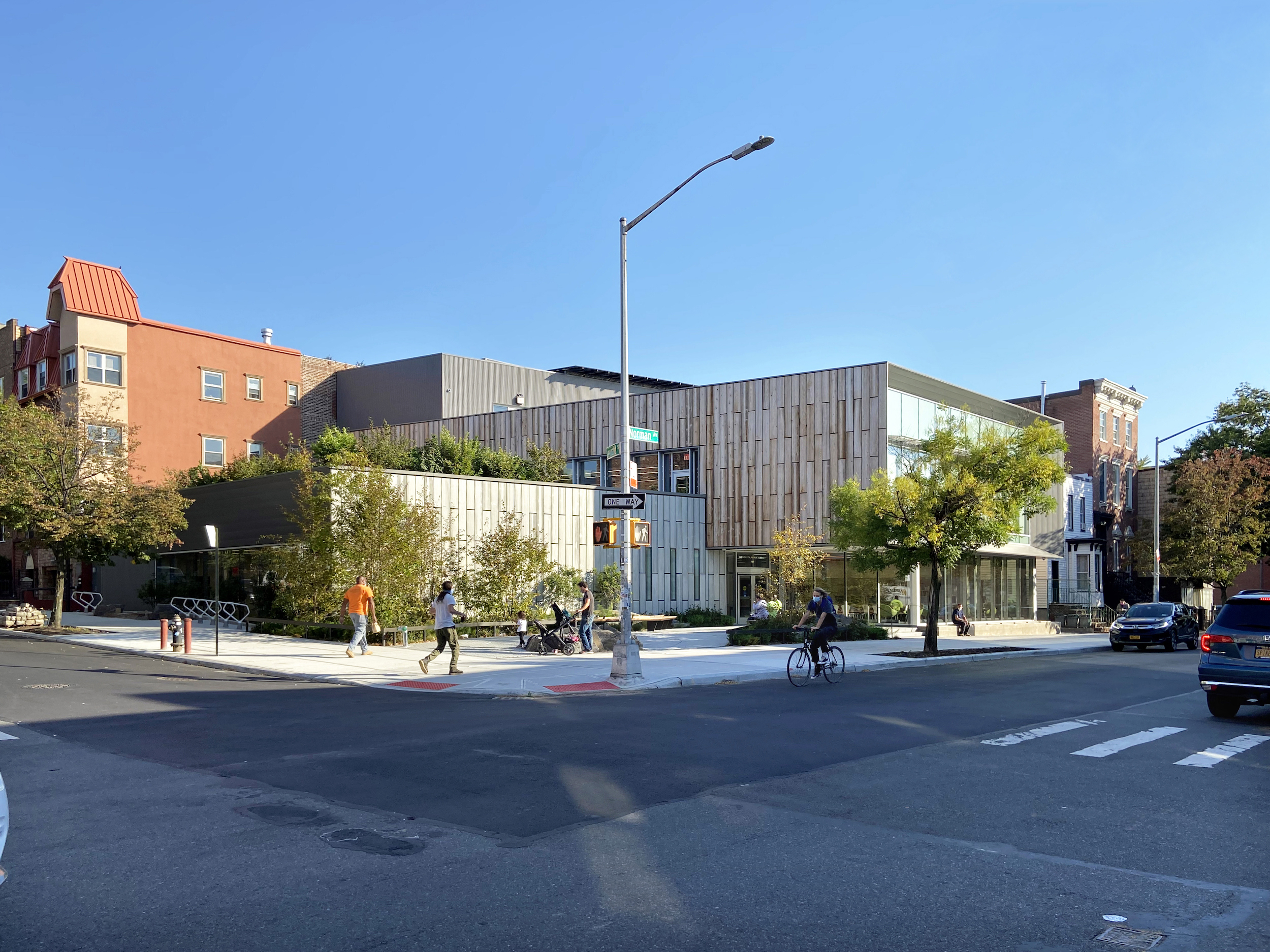
As for the deep-green building’s primary function as a public library, the Greenpoint branch is now only open for grab-and-go lobby services only due to the pandemic. Once wholly open, the BPL card-carrying community can take full advantage of a state-of-the-art facility that includes ample electrical outlet-equipped quiet study areas as well as a special area for teens, “whose needs were under-met in previous decades with the traditional library layout of children’s reading rooms and adult spaces” according to BPL. There’s also a generously sized community meeting room along with smaller meeting spaces; the library’s outdoor spaces are also geared for community gatherings and BPL-hosted programming.
“The new Greenpoint Library models the enormous potential of public libraries in the 21st century,” Linda E. Johnson, president and CEO of Brooklyn Public Library, in a statement: “In 2020, in Brooklyn and beyond, we need more libraries like this one: that make vital knowledge and beautiful design accessible to all, that empower people from all walks of life to come together and build a more sustainable, more just world.”






